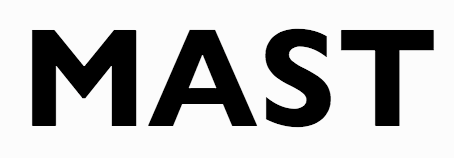
Call for Papers: Automating Visuality: The Image Beyond Representation
CFP SPECIAL ISSUE:
AUTOMATING VISUALITY: THE IMAGE BEYOND REPRESENTATION
GUEST EDITORS:
KATHRIN MAURER (UNIVERSITY OF SOUTHERN DENMARK)
LILA LEE-MORRISON (UNIVERSITY OF SOUTHERN DENMARK)
DOMINIQUE ROUTHIER (UNIVERSITY OF SOUTHERN DENMARK)
Deadline for abstract submissions: 15th February 2021 (for publication in November 2021).
Today, it is no longer merely human labor power but also the labor of looking that is potentially rendered superfluous by automation. Whether in the routine inspection of manufacturing processes, the interpretation of drone surveillance footage, or the curating of fine-art, we are witnessing what the art critic Hal Foster describes as “the gradual automation not only of labor and war but also of seeing and imaging.” While the human remains in the loop in most cases, the “robo-eye” increasingly substitutes for human judgment in such diverse contexts as drone warfare, preventive policing, border control, insurance and tax collection, medicine, consumerism, online social interaction, and art.
Current developments in machinic vision—including drone sensors, pattern recognition, artificial neural networks, spectral imaging, and lidar technologies—are profoundly challenging ideas of vision and visuality as intrinsically related to human perception and understanding. Scholars and artists, in turn, have developed a host of new concepts—the operational image, soft image, post image, differential image, invisible image, to name a few—that address changes to the image-form and to the late-modern paradigm of visuality. While some scholars claim a loss of representation, others see new non- or posthuman representational mechanisms emerging through machine vision processes.
Whether celebrated or shunned, AI-powered machine vision unsettles entrenched notions of meaning and interpretation while highlighting discontinuities between machinic and human scales of sensing, perception, and judgment. The automation of visuality is pushing the image to the limits or even beyond the perimeters of traditional theories of representation. Do we in the humanities still know what an image is, how it functions, what it represents, to whom it matters, and why? Perhaps “art history,” as artist-theorist Hito Steyerl provocatively asks, was something like “an anticipatory tutorial to help humans decode images made by machines, for machines?”
For a prospective interdisciplinary special issue, we ask contributors to take stock of the automation of visuality and to reflect upon questions related but not restricted to the following:
– What new forms of machinic vision bring historical paradigms of the image into relief in fields such as media studies, art history, media aesthetics, cultural theory, communications studies, and visual culture studies?
– How does the advent of automating visuality intervene in and change the cultures and technical procedures of film, photography, and art production?
– In what specific ways are practicing artists and curators negotiating, addressing, criticizing, and interpreting representation in the context of machinic vision?
– How do the mechanisms of representation in machine vision processes intervene as forms of “social sorting” and subject formation, especially regarding race and gender identities?
– How does the image-form retain value and meaning in the context of specific contemporary uses of machinic vision (e.g., in drone surveillance, automatic facial recognition systems, preventive policing, border control, and other relevant contexts)?
– How do new forms of machine vision map onto the larger cultural and political conditions and shifts within our current conjuncture?
We invite interdisciplinary contributions that bring into dialogue perspectives from e.g. visual culture, art history, literature, media studies, science and technology studies, cultural studies, gender and sexuality studies, critical race theory, and other related fields in the humanities. Independent scholars and artists are also encouraged to submit. We particularly welcome submissions that closely analyze specific visual technologies and their possible contexts of application. We will select a total of five to seven abstracts for our theme issue proposal to an international peer-reviewed journal of choice.
Please send your abstract of 300-500 words accompanied by a short biography to Dominique Routhier (dominique@sdu.dk) no later than February 15, 2021. We will notify you on March 1, 2021 whether we invite you for a full submission. Completed essays of approximately 7.500 words are due June 30, 2021.
This call for papers is produced as part of the research project Drone Imaginaries (2020-2024), funded by the Independent Danish Research Council and housed at the University of Southern Denmark (www.sdu.dk/diac). Direct possible inquires to a member of the editorial team: Dominique Routhier (dominique@sdu.dk), Kathrin Maurer (kamau@sdu.dk), Lila Lee-Morrison (lile@sdu.dk).